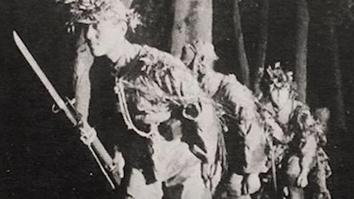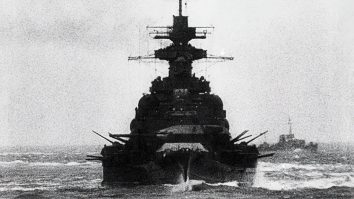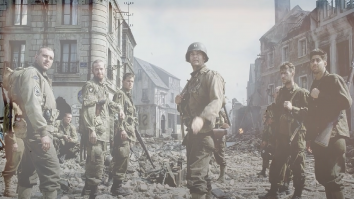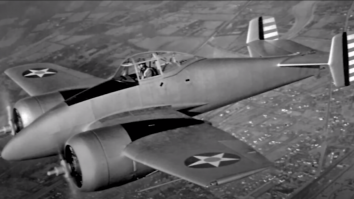In 1930, the US Army and Navy looked for an engine that could meet or exceed a benchmark of 1hp per cubic inch. Back then, only racing engines could achieve this benchmark, but these four engines tried their best to achieve that goal: Chrysler XI-2220 Chrysler was adamant that their inverted V-type 16-cylinder engine would […] More
Peaceful At First In early 1944, Iwo Jima was viewed as a remote and boring place to be assigned as a soldier. No fighting was involved since the Japanese Navy and Air Force controlled the islands and the waters nearby. The only real threat at that time was the absence of clean, drinkable water. Increasing […] More
Kevin from Air Zoo gave us a technical tour of the world’s first operational cruise missile. Here are some interesting facts about the V-1 Flying Bomb: 1. The nose has a little spinner Its spinner is an air log that measures the distance the V-1 has flown and is connected to a counter unit with […] More
Experimental Interceptor In late 1939, the USAAC sought out a design that specifically called for unconventional designs. Curtiss-Wright’s entry for the proposal was the XP-55 Ascender – or “Ass-ender,” as some would call it. Peculiar Airframe It had a rear-mounted engine driving an ejectable pusher propeller. Meanwhile, the rear-mounted wings were swept-back and had vertical […] More
In 1941, British forces failed to enforce a blockade on the English Channel, allowing a huge German fleet to move through even the narrowest sections. The failure of the bomber command to land a hit or the Navy to hit a single torpedo made headlines. Here’s how it went down: 1. Germany had limited maritime […] More
1. It was an interim solution When war broke loose in Korea, the US decided not to wait on the T42 medium tank still in development. Their solution was to use an existing M46 hull and combine it with a T42 turret. Though it was still new, officials decided that the improvements in firepower and […] More
1. Opening Sequence Wasn’t Filmed In France The French government refused to give permission to film on the beaches of Normandy. The sequence was instead shot in Ireland. 2. Based Casting On WWII Footage Spielberg argued that the boys before looked like men, unlike today, where we all look innocent. Therefore, he based his casting […] More
Dive and Zoom Attacks P-40s turned better at high speeds than the Zeroes. Moreover, it was slower to climb but faster in a dive. Though the Zero was generally quicker and had better handling qualities, it often lacked firepower and sturdiness. If the P-40 could dive into the Zero, fire its machine guns, and zoom […] More
MiGs In The Distance At 4:10 PM on September 10, 1952, Captain Jesse Folmar and his wingman Lt. Walter Daniels were ordered to attack a troop concentration on the south side of the Taedong River. As the two entered enemy territory, they began to execute a tactical weave at 10,000ft. The pair patrolled over the […] More
Had A Tricycle Landing Gear Unlike its predecessor, the XP-50 actually had a nose. Its nose allowed it to house a nose wheel, giving it a tricycle landing gear configuration instead of the usual “tail dragger.” The new configuration offered better visibility and significantly reduced ground looping. Impressive Proposed Armament If the XP-50 were to […] More
Experienced At 23 A B-17G piloted by Richard L. Maggart took off from RAF Manston to escort other bombers and bring down a German weapons complex in France. Despite being 23 years old, this was Maggart’s 23rd mission as a B-17 pilot. Experimental B-17 His Flying Fortress had the words “West End” on its nose. […] More
Have you ever wondered which aircraft between the two iconic planes you’d rather fight in during WWII? Then here are ten categories to guide you in our decision: Speed P-38Es had a top speed of about 415 mph, while the most-produced variant of the Mosquito (FB Mk. VI) had a top speed of 380 mph. […] More













